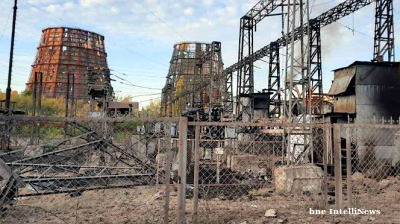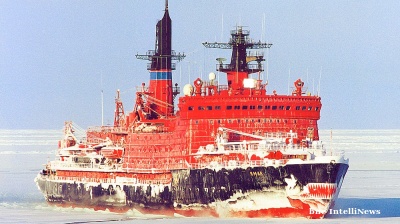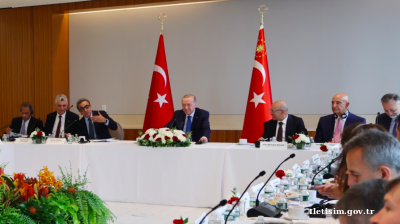The use of sanctions to pressure countries has become the go-to foreign policy tool but the economic repercussions are still not well understood and unlike previous sanctions regimes on relatively isolated countries like North Korea and Iran, the sanctions on Russia, which is deeply integrated into the global economy, can have unintended consequences, the Institute of International Finance (IIF) said in a white paper entitled “Market interventions: the case of the US sanctions on Russia” released in February.
The paper is timely as the US has two new sets of sanctions on the table that it is threatening to impose on Russia. And despite a lull in the Russiagate hysteria following the release of the Mueller report that debunked the most outlandish of the accusations levelled at the Kremlin, as the presidential election campaign gathers momentum Russia is once again being accused of interference. Sanctions have been used not just as a foreign policy tool, but they are also used to boost politician and party standing on the US domestic political scene. In Russia’s case it has been assumed that imposing sanctions can earn a US or European politician significant political capital by “looking tough” at no political cost. However, the imposition of sanctions already put in place on Russia has clearly shown they do come at a cost, as they have a nasty habit of boomeranging back and hurting the issuing country as well.
“The value of sanctions lies in the fact that they are perceived to be a lower-cost and lower-risk way to change another country’s behavior compared to, alternatively, some form of military action. However, sanctions are a form of government market intervention and can have significant unintended and uncertain consequences — particularly if they are placed on an economy highly integrated into the global economy and the international financial system,” the IIF team of deputy chief economist Elina Ribakova and her colleagues, Benjamin Hilgenstock, Greer Meisels and Stefan Gringel, wrote in their report.
The IIF argues that the US sanctions imposed on Russia after the 2014 annexation of the Crimea peninsula was a “paradigm shift” as they proved effective in limiting the flow of foreign funding into the country, forcing substantial fiscal adjustment and the deleveraging of corporates. “Partially as a result of sanctions, GDP growth has remained underwhelming for many years,” the IIF concludes.
2018 saw several rounds of sanctions imposed on Russia, although apart from those targeting oligarchs in April, the rest were mild. The most recent sanctions were slapped on Russia to stymie the completion of the Nord Stream 2 gas pipeline at the end of last year and only last week limited fresh sanctions were placed on state-owned oil major Rosneft to punish it for helping Venezuela dodge its own US sanctions and export oil to the international market.
The new sanctions under discussion by the US Congress could target investments into Russian domestic sovereign debt, the Russian Ministry of Finance's ruble-denominated OFZ treasury bills, which have performed extremely well in recent years and are widely held by US investors.
“However, it is far from certain that further sanctions targeting external funding would have the desired effect. The Russian economy is in a dramatically different place now compared to 2014: the country’s economic institutions are credible, macroeconomic vulnerabilities are extremely low, and buffers such as foreign reserves have been built up. Additionally, Russian debt plays an important role in the international financial system, so the range of unintended consequences is potentially large,” says the IIF.
The last time the US tried to impose harsh sanctions in 2018 by targeting companies belonging to oligarch Oleg Deripaska in the April 6 round of sanctions that year, the complete ban on doing any business with his companies or owning any securities sent up a howl of pain amongst western investors to the point where these sanctions were eventually withdrawn nine months later. It turned out that the Rusal aluminium plant was too deeply integrated in the global economy and these sanctions caused chaos on the international metals market that threatened to boomerang back on the US economy.
New sanctions on the cards
There are two new bills on the table that could be implemented: Defending American Security from Kremlin Aggression Act of 2018 (DASKA) and the Defending Elections from Threats by Establishing Redlines Act of 2018 (DETER).
DASKA targets bonds issued by the state and could include the all-important domestic OFZ treasury bills. DETER is far broader and could be used to sanction any debt issued by any entity if it can be shown to be “controlled by Russia”.
There are three main ways sanctions could hurt Russia. First is by restricting its ability to borrow they could force the government to raise taxes. An alternative source of funds is to cut back on imports to create revenues from the balance of payments on trade. And the last option is to tap the balance sheets of state-owned enterprises (SOEs) by forcing them to deleverage.
The IIF says that the 2014 sanctions were particularly effective as at the time the Russian corporates and banks were heavily reliant on foreign borrowing (largely in dollars) and so both the balance of payments and balance sheet mechanism came into play after these banks and companies were effectively cut off from international financing.
That was six years ago. Since then the Kremlin has been working very hard to sanction-proof the Russian economy by building a “fiscal fortress”.
“The Russian economy of 2020 is in a much stronger position than it was after the 2014 sanctions were imposed. The ruble has been allowed to float freely since 2014 and functions as a key shock absorber. Russian corporates were forced to deleverage following their loss of access to external financing and are now significantly less reliant on such funding sources. Furthermore, both current account and fiscal balance are in surplus. Finally, public debt is low (12.3% at the end of 3Q19), external borrowing is small, and FX reserves are the second largest after China,” says the IIF, which concludes that Russia has successfully insulated itself from the worst impacts of any new sanctions.

One of the biggest changes has been the health of the budget. In 2015 the consolidated federal budget deficit peaked at 7.6% of GDP and the domestic markets alone were simply not big enough to fund the gap. Cut off from international borrowing the finance ministry faced a crisis in 2016, unable to fill a RUB2 trillion hole in the budget. The problem was solved with the faux privatisation of a stake in Rosneft, that later turned out to be a loan.
The budget has been transformed over the last six years. Spending has been cut, tax collections have soared, VAT and retirement ages were hiked, and the budget went back into surplus in 2018 for the first time since 2011. This budget surplus has immunised Russia from new harsh sanctions.

The banking sector is also now lean after dealing with the effects of sanctions for several years. Domestic banks’ holdings of general government debt securities as a share of total assets are less than 3% – low by historical standards – and they have almost entirely deleveraged. Where once the banks funded their business with wholesale borrowing on the international Eurobond market, now they are almost entirely dependent on their domestic deposits.
“If necessary, domestic banks appear to have enough liquidity to keep rolling over sovereign debt and could buy out approximately 90% of foreign investors’ debt ($60bn in liquidity surplus vs. $68bn in debt held by foreigners), even at par,” says the IIF.
But the biggest change was the decision to allow the ruble to become a freely floating currency in 2014, which has allowed the economy to sustain significant shocks, like the collapse of oil prices that year, without burning through its hard currency reserves.
“The free-floating ruble functions as the first line of defence to balance-of-payments shocks, and the [Central Bank of Russia] CBR has kept real rates elevated at the upper end of its own neutral rate estimate range of 2-3% in real terms,” says the IIF.
Moreover the gross international reserves (GIR) have been built up to beyond $500bn, which was the CBR’s “comfort” level, and acts as a second line of defence.
Indeed, it is unlikely that the CBR will have to dip deeply into these reserves if there is another shock as at the same time the level of external debt has been reduced dramatically. When the sanctions were first imposed in 2014 Russia had more than $250bn of external liabilities, which could have eaten up most of its reserves. Today the total non-resident holdings of OFZs are about $46bn. Instead of using reserves to cover this, just temporarily suspending the fiscal rule that siphons off all oil and gas revenue over $42 per barrel of oil prices would probably be enough to cover much of this liability before it was necessary to tap the reserves.

The price of security and unintended consequences
The Kremlin has made it very hard to attack the economy using economic sanctions, but the construction of this fiscal fortress as come at a price – low growth. Last year it was clear that the Kremlin considers the construction work to be complete and has turned its attention back towards boosting growth using the 12 national projects as a mechanism.
“Sanctions on sovereign debt are unlikely to hinder spending on national projects since most of the spending will be budget neutral, financed by a redistribution of funds within the budget and the 2019 VAT increase. In the long run, however, budgetary restrictions as a result of higher cost of funding will impact fiscal policies, requiring either spending cuts or higher taxes. Furthermore, any sanctions could continue to weigh on confidence and productivity, and therefore reduce potential growth,” says the IIF.
As the sanctions on Deripaska and the affect on the international metal markets so clearly showed, placing sanctions on a country that is large and well integrated into the global economy can backfire thanks to the unintended consequences.
“Russia is fundamentally different from previous targets of comprehensive sanctions regimes — including Iran, North Korea, and Cuba — so these cases provide little guidance. Spillovers from sanctions may be felt well beyond the borders of Russia or the sanctioning country,” says the IIF, adding that rivalries between the various agencies in the US government only make the problem more complicated as each of these has its own agenda.
The issue comes to a head in Russia’s sovereign bonds, which are a part of all emerging markets indices, widely held by foreign investors and key to running Russia's financial and banking systems.
Ironically one of the unintended consequences is that thanks to the fiscal fortress Russia currently has become a safe haven for international investors, which have been piling into its bonds and stocks: both the bond and equity markets soared last year, which ended with Russia among the top three best performing markets in the world.
As bne IntelliNews has reported foreign investor participation in the OFZ market currently lies at over 30% of total outstanding debt. Excluding less-liquid instruments, it is closer to 50%, says the IIF. Demand for these bonds has been so strong that the bonds have been issued at a discount to their price on the secondary market – a very rare phenomenon.
“The OFZ market attracted around $16bn in non-resident flows in 2019 alone, and such inflows made up more than two-thirds of net OFZ issuance. To put this number into perspective, the total outstanding OFZ stock at this point is $142bn,” says the IIF.


Of the foreign share of OFZs it is only possible to identify the country of origin for about a fifth of the bonds, but more than half of that fifth are from the US with another 40% coming from Europe. So any sanctions on Russia’s sovereign debt hits US investors hardest.
Sanctions preventing US investors buying primary issues of Russian sovereign bonds last year had little effect. No one sold the bonds they already held and Russia doesn't rely on international borrowing to fund its budget: the total outstanding Eurobonds only account for 2% of GDP, or some $40bn as of 3Q19. Indeed, more sanctions on the sovereign Eurobonds will only stop the government from issuing more, but the scarcity of Russian Eurobonds will actually drive demand for the existing ones up, argues the IIF.
And new sanctions on Russian Eurobonds can be dodged, as it is possible to issue a US dollar-denominated Eurobond using another currency. Indeed, recently issued Russian Eurobonds now have a “sanctions clause” that allows the issuer to settle in another currency, like rubles, if the bonds are sanctioned.
Sanctions on the secondary market for Russian bonds is a different kettle of fish and could have major consequences. Everything will depend on just how comprehensive these sanctions are. They could range from a ban on buying any new issues to the extreme of forcing investors to divest their entire holdings.
Forcing US investors to sell would mean US investors would have to write off their circa $20bn worth of holdings of OFZs: if you are not allowed to own them then there is no one who can buy them. The Russian Ministry of Finance has said it may buy investors out in this case, but the losses to US investors would still be substantial as they would be sold at default prices.
Another consequence of sanctions on OFZ primary issues (but none on buying on the secondary market) would be to boost the income of Russia’s domestic banks, while killing off the business of the foreign banks working on Russia’s capital markets. While the share of foreign owned banks in the Russian market is small (6.5%) their share of the OFZ trading is large, on a par with the Russian banks, as they act as intermediaries for international bond traders. Sanctions on the primary issues would kill this business entirely and drive it into the hands of the domestic, largely state-owned, banks.
Sanctions would also affect the currency markets and have far-reaching consequences. Over the last few years the ruble has become one of the most heavily traded foreign currencies on the FX markets and the OFZ is highly important to these markets, where they are used to manage liquidity and as a value store to park cash. Any restriction placed on trading OFZs could cause this currency trade to dry up.

The ruble FX market and the OFZs are linked to a variety of derivative products so any restrictions would have ripple effects throughout the financial system. And if sanctions target the ruble’s role in the international settlement system that would also have a knock-on effect on the energy market by affecting the flow of cash from Russia’s extensive exports of oil and gas as the deals are settled by Russia’s leading state-owned banks which would suddenly have problems moving money over the border.
Finally the EU would become an innocent bystander caught up in the car wreck. According to the most recent data from Eurostat, Russia represents the fourth-largest destination of EU exports and the third-largest origin of EU imports as of 2018. Some member states like Finland, the Baltics and Bulgaria are even more dependent on trade with Russia. All EU member countries are heavily dependent on Russian energy imports.
As most of this trade is financed by Russian state-owned banks any sanctions on them with disrupt the circa $300bn of trade Russia does with Europe each year, causing losses for everyone.
The EU has its own sanctions on Russia, but they are milder than the US sanctions and the EU has not implemented the sanctions imposed by the US in the subsequent rounds to the 2014 measures.
Features

Ambition, access and acceleration – Uzbekistan’s Startup Garage opens free academy for entrepreneurship
Aim is to train 50,000 young founders by 2030.

Ukraine’s growing energy crisis promises a cold and dark winter
Since the summer, Kyiv has changed tactics. Given the almost complete failure of Western oil sanctions to curb Russian oil exports, it has been targeting Russian oil refineries. The Kremlin has struck back, targeting Ukraine's power system.

Russia, China sign off on Northern Route shipping deal to slash global freight times
Russia and China have signed a landmark agreement to develop and commercialise the Northern Sea Route (NSR), after Beijing tested the route last month, that could slash Europe-Asia cargo transit times and challenge the primacy of the Suez Canal.

Sri Lanka’s economic escape
Sri Lanka’s recovery over the past year reads like a narrow escape rendered into a cautious, albeit unfinished success story.



